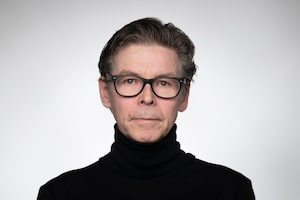
Former Suncor CEO Mark Little stepped down on July 8, a day after a 26-year-old Komatsu employee was killed at a shovel maintenance pad at Suncor’s base plant north of Fort McMurray, Alta.Jeff McIntosh/The Canadian Press
Mark Little’s departure as chief executive officer of Suncor Energy Inc. SU-T won’t solve the company’s struggles with eliminating deadly safety lapses in its operations. But it does show just how serious the problem is.
What’s needed now is a new CEO, of course – but, more importantly, a corporate culture change, so the company can live up to its promises to keep its workers safe and its plants running reliably. This will take time, money and, likely, more changes at the top.
Mr. Little handed in his resignation on Friday, a day after a 26-year-old Komatsu employee was killed at a shovel maintenance pad at Suncor’s base plant north of Fort McMurray, Alta. Two other workers were sent to the hospital with minor injuries.
Suncor has launched a search for Mr. Little’s replacement, and it has named Kris Smith, until recently its executive vice-president of downstream operations, interim CEO.
The incident marked the 12th fatality at a Suncor site since 2014. It’s a tragic statistic, and an indicator that the company has failed to tackle a crucial risk-management issue. The flaws had recently been pointed out by activist investor Elliott Investment Management LP., which launched a campaign for board of directors changes at Suncor in the spring.
Suncor begins search for new CEO as focus turns to worker safety after deaths
Suncor CEO resigns after latest fatality at a company facility
Suncor cancels planned investor update in wake of CEO’s resignation
Mr. Little is highly respected for his efforts to help push Suncor and the rest of the oil sands industry toward achieving net-zero carbon emissions, and he is a forceful and engaging voice for the industry on the national stage. But his three-year tenure as CEO of Canada’s largest oil sands producer was dogged by workplace accidents and operational mishaps.
His position became untenable after the latest incident, especially given recent heightened attention to safety issues at the company. But not all of Suncor’s problems can be laid at his feet, according to Phil Skolnick, a veteran analyst at Eight Capital.
“The CEO creates the atmosphere and the culture, but these tragedies were happening before he became CEO,” Mr. Skolnick said. “I think there’s something deeper in the culture and deeper in the processes.”
The oil sands industry is a big, heavy, dangerous one, involving all kinds of trundling and clanking machinery that scrapes the earth and hauls ore, as well as pipes and vessels through which flammable liquids and gases travel. A momentary distraction can be disastrous for workers, and ultimately for their families. It’s important not to downplay the personal tragedies these incidents cause.
But lapses in safety also have material impacts on financials, in the form of lost employee hours and reduced output, as well as risk to a company’s reputation and the potential for legal action. Accidents will always happen, but a successful safety culture shows improvement.
Mr. Skolnick pointed out that workers have been killed at sites run by other operators in the oil sands. But, since 2014, Suncor has had triple the fatalities of the company with the second-highest total, Canadian Natural Resources Ltd.
What’s needed at Suncor is a “meaningful overhaul,” which is likely to be expensive and time-consuming, Mr. Skolnick said. He has lowered his rating of the company’s shares from “neutral” to “sell.”
Suncor says it has been overhauling its processes. Its 2022 sustainability report explains how its “Operational Excellence Management System” is designed to reduce risks, simplify work and improve performance through standardized processes, data and tools. “We’ve expanded our focus to include not only preventing serious events and learning from errors, but also to having controls in place to minimize consequences when incidents happen,” Suncor said in the report. But in the next paragraph it said workers were killed in January, 2021, and in January, 2022.
In May, the company made a host of moves on the safety front, including a third-party review, a change in management and the incorporation of new fatigue management and collision-avoidance technology.
But all these processes have to be accompanied by shared practices, beliefs and attitudes about safety throughout the organization. That is, they must be embedded in the culture, and Suncor’s record shows otherwise. Such a shift at such a large organization won’t be easy.
Interim boss Mr. Smith has more than two decades of experience at the company, but the new full-time CEO should be an external candidate who brings a fresh perspective, said Travis Wood, an analyst at National Bank Financial. Mr. Wood wrote in a research note that more executive changes are likely in the cards “to properly and effectively strike cultural change across Suncor’s ~17,000 people (including contractors).”
The process of change will “take longer than we’d like,” said Laura Lau, chief investment officer with Brompton Group, which holds Suncor shares.
“What I find is operations issues take a while. Cultural issues take even longer. I think they have to institute new process, because it’s not just one mine, it’s multiple mines that have issues,” Ms. Lau said.
Your time is valuable. Have the Top Business Headlines newsletter conveniently delivered to your inbox in the morning or evening. Sign up today.
 Jeffrey Jones
Jeffrey Jones